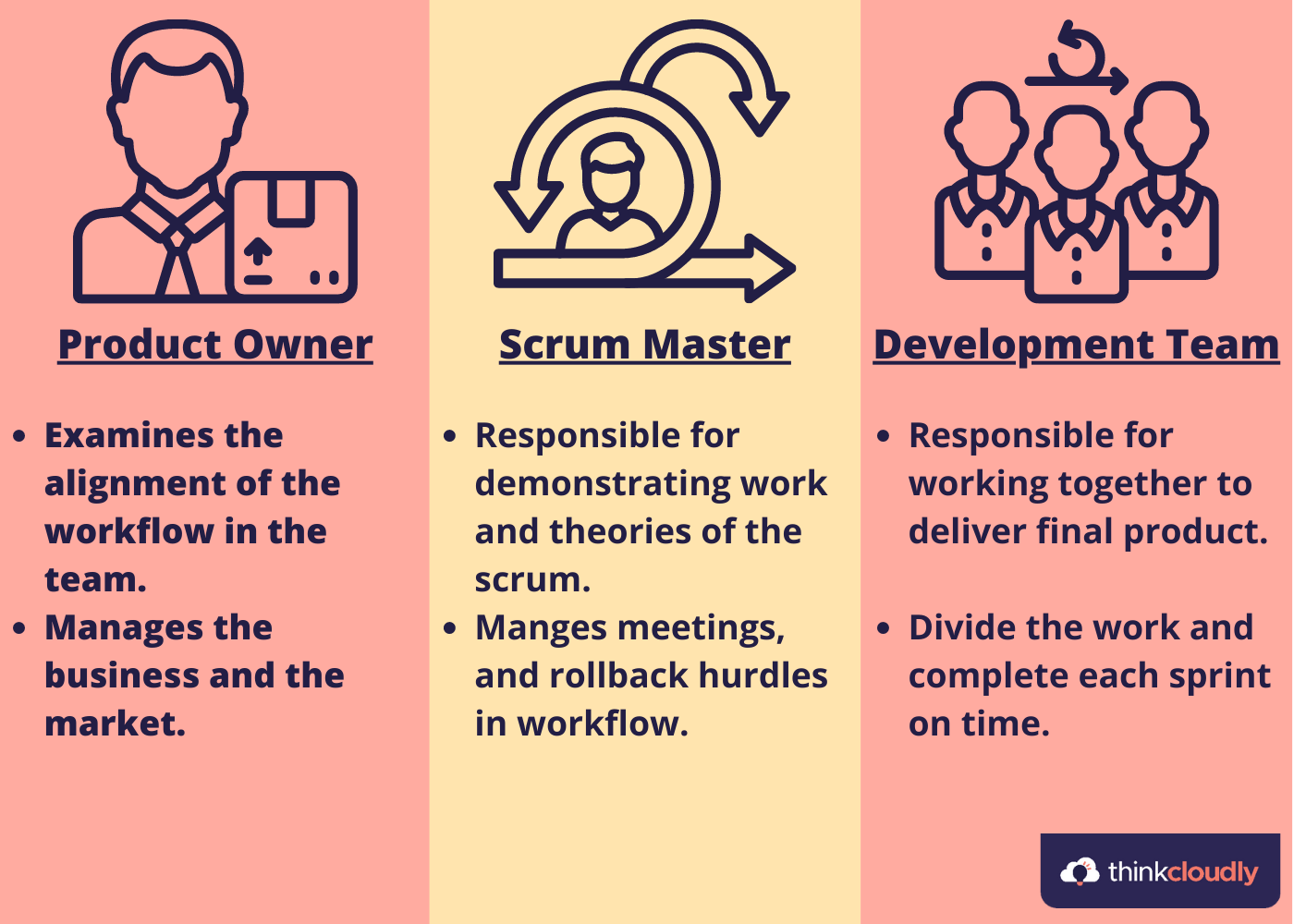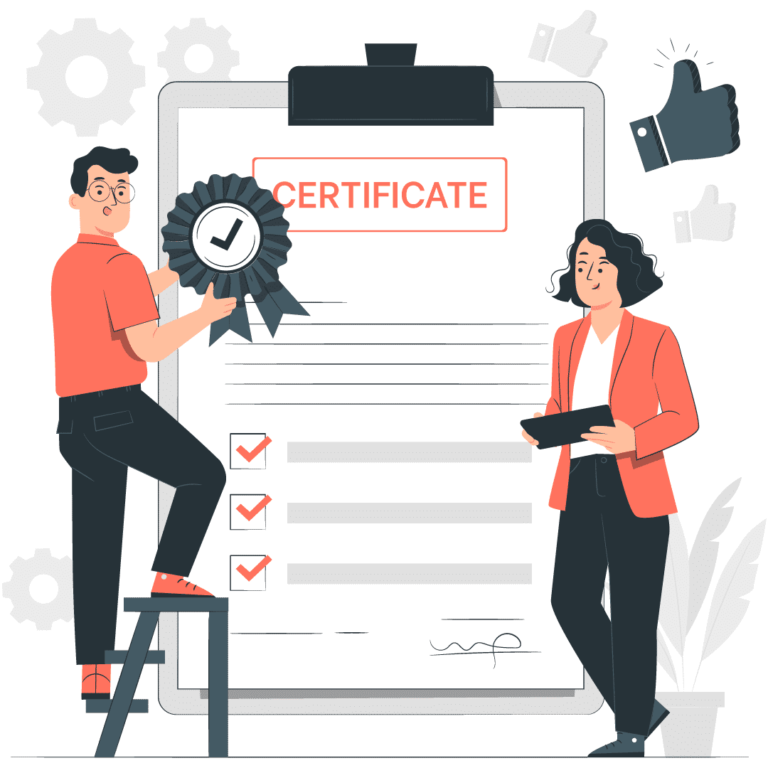Doing something in an agile method is a good deal for everyone. Isn’t it?
Yes, it is. So, let’s read over such a framework for doing work in an agile method.
Glimpse:
Scrum is a lightweight framework out of many frameworks of agile methodology. The philosophy helps us deliver the product in pieces of sprints followed by reviews and adaptions.
Before going further, let’s find out why to use it.
Why Scrum?
Let’s say you have to develop software. So, traditionally we use the waterfall model, which follows specific steps of requirement analysis, planning, designing, coding, testing, deployment, and maintenance to deliver the final product, which is very tedious and cost-inefficient. Hence, we developed an agile methodology that holds many frameworks with different sets of rules and approaches but a similar outcome. Scrum is one of these frameworks. That’s why scrum.
Boost your earning potential with Scrum expertise. Explore our certified Scrum courses for a high-paying career
- Explore scrum master online training
Specialities of Scrum:
- Development in sprints: The final product is developed in sprints. That means the team divides the job of reaching the final product into various sub-jobs as sprints, and at a time, a sprint is completed regardless of the final product.
- Team Work: No single individual is working alone. The people work as a team to reach a goal by completing their tasks as discussed in daily scrum.
- Continuous functional product delivery: Since the whole work goes on in sprints, there is a constant delivery of some results for review and analysis instead of waiting for the entire development cycle to get completed to get a final product.
- Reviews and Adaption: Since we get small results or sub-products with the completion of the sprint, we can get reviews over them and adapt the iterations. Hence, the Scrum framework follows the review and adaption model.
There are 3 Core roles in Scrum Framework:
Product Owner
As the name states, the product owner owns the product and its budget. The product owner examines the alignment of the workflow in the team, whether anyone in the group does it, and manages the business and the market. He can take ideas from whole teams, but he is a single person responsible for every significant decision taken.
Scrum Master
Master is a kind of facilitator for the development team. He/She is responsible for demonstrating work and theories of the scrum to the teammates, managing meetings, and rolling back the hurdles to the team in the way of development.
Development Team
The team of specific individuals working together to deliver the final product. They have the authority to divide the work and complete each sprint on time.
Be a Scrum Master Today. Thinkcloudly provides you well structured courses for Scrum Master.
The Scrum Artifacts:
Scrum Artifact is a kind of documentation that includes product backlog, sprint backlog, burndown graph, and product increments used in combination for tracking the product development progress.
- Product backlog: It is documentation that includes the remaining work to reach the final product. The product owner uses it to track the product’s progress and the development team’s efficiency.
- Sprint backlog: It is a sub-document of product backlog which contains the details and backlogs in a sprint or simply the remaining tasks to be completed in the sprint. It is used to track the healthy flow of sprints.
- Burndown graph: It is a graphical representation of the remaining tasks to reach the final product and can be used to track the progress of the development of the product in one view.
- Product increments: It is just the sum of total works completed in a sprint and the results in the previous sprints. It can be too used as a product progress trackable tool.
Now, Thinkcloudly expects that you are well known with the terms and basics we will face up in the scrum. Let me put forward the crispy working model of the scrum before you.

Working:
The framework completes in four phases:
- Sprint Planning: In this phase, the product owner discusses the working model for developing a product with the team and plans how the work will be divided into different sprints. The documentation of the sprint backlog follows in this phase.
- Sprint Processing: In this phase, the master analyses the team’s work. There is a daily call in the team where the master verifies the work done by all the team members in the last 24 hours and plans for the upcoming 24 hours. Generally, it is assumed to finish up a daily meet in 15 minutes.
- Sprint Review: This is the phase where the team members put up the work done through them, and the amount of completion of the sprint is calculated on that basis, and replanning is made to meet the deadline.
- Sprint Retrospective: This is the checklist updation phase where the team signs over the completed tasks in the sprint and adds any leftovers in the upcoming sprint.
Following these artifacts and co-points of the agile scrum model, one can achieve the optimality of the development of any product in any field.
Key points to take home:
- Scrum is a lightweight framework that helps us deliver the product in pieces of sprints followed by reviews and adaptions.
- It is a framework of the agile method of traditional software development life cycle models like the waterfall model.
- Framework works on development in sprints, teamwork, continuous functional product delivery, and reviews and adaption model.
- Working of the framework is based on various artifacts termed as the product backlog, sprint backlog, burndown graph, and product increments.
- The model of scrum functioning goes on in four phases: sprint planning, sprint processing, sprint review, and sprint retrospective.
- Learning Cloud is fun with knowledge. Don’t forget to explore our courses for more details.







No comment yet, add your voice below!